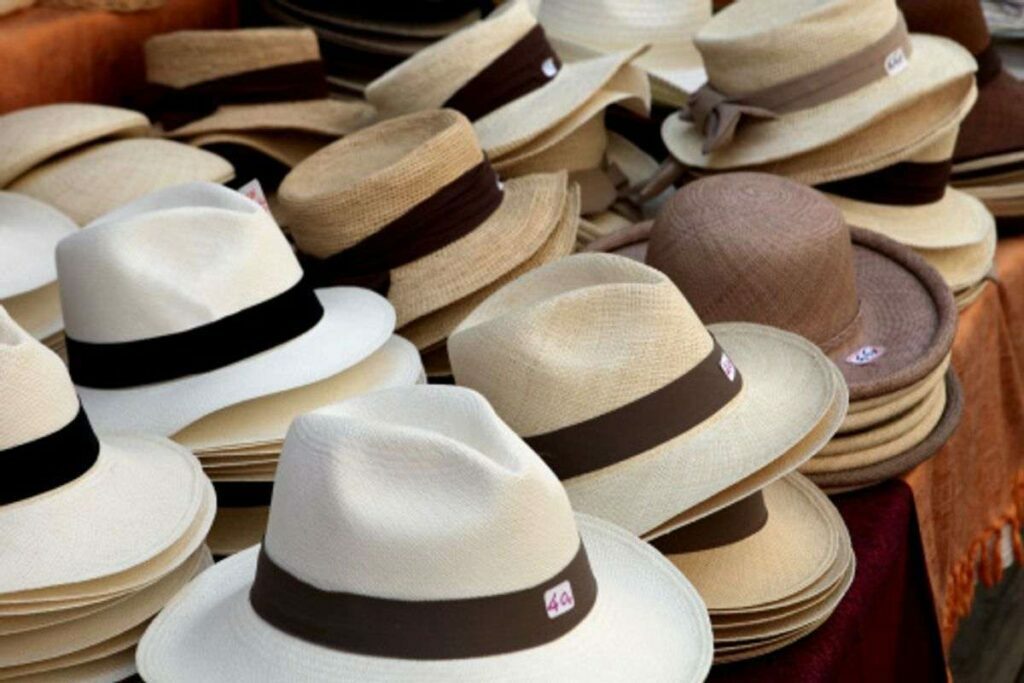Anyone who loves hats will have one, if not more, straw sun hat in his possession. Straw hats are ideal for the summer months as an accessory to complete your outfit for all kinds of occasions and even visits to the seaside. Being lightweight, they rest easy on the head, are intelligent and attractive looking, and most importantly, the material is breathable and keeps you comfortable all day long. When paired with sunglasses, a straw Panama hat is the perfect combination to conquer the world during the blistering summer with its ultra-cool looks. There are many different kinds of straw sun hats, making them versatile and fit for wearing on all occasions.
History of Straw Hats
Distinguished by their weave of different fibres, straw hats are believed to have been widespread use as far back as the 15th century, particularly in Asian countries like China, Japan, Vietnam, Malaysia, Indonesia. Workers in the paddy fields wore them to shield themselves from the blazing sun and rain. Evidence points to men’s widespread use of straw hats in the early 15th century in Europe. After that, they also became fashionable among women, as seen in various portraits. In 1865, John B. Stetson invented the classic cowboy hat, which remains immensely popular. By the 1800s and early 1900s, everyone was wearing straw hats, but they shot into fame when President Theodore Roosevelt visited the Panama Canal in 1906 wearing a pale suit and a Panama hat. The photo circulated worldwide shot the Panama hat into instant fame and catapulted it to the top rank in Ecuador’s exports by 1944. Since then, various straw hats like the Boater, Buntal, Conical, Salakot, Fedora, Floppy, The Lifeguard, The Garden Straw Hat, and The Derby Straw Hat have joined the Panama hat in the ranks of popular lifestyle headgear.
Different Straw Hat Materials
You get straw hats in many different styles, and you can choose from various materials that give the caps their unique texture and colour. Some of the more popular kinds of materials used to manufacture straw hats include:
Toquilla straw: It is a product of a kind of palm tree that characteristically grows on the coast of Ecuador. The farmers cultivate the palm trees and harvest them once the stems of the leaves are fully grown. The process involves separating the fibre from the green stems and boiling them to eliminate the chlorophyll. Then the farmers bleach the fibres with sulfur over a wood fire to give Panama hats their unique colour and texture. The weavers begin the hat manufacturing process with the crown and then finish the brim. The hat is then washed, bleached, moulded, and ironed. The weaving techniques are passed on from one generation of weavers to the next by observation and imitation. The price of the hats depends on how finely woven the material is. The quality of a toquilla straw Panama hat is defined by the finesse of the weave, its tightness, and the time spent weaving it.
Toyo straw: A Japanese speciality, Toyo mens straw sun hats are crafted from colourful yarn made of rice paper. The caps are usually finished with a plastic glaze that gives them a smooth feel and a characteristic shine. Depending on the ice used, Toyo straw hats are either viscose white a golden copper. The caps are lightweight and soft to the touch and are comfortable to wear even for long periods.
Raffia straw: This hat material is technically not straw but made by peeling the Raffia palm leaves. According to Inhotim, each needle-like leaf can be as long as 20 meters, which means it is possible to weave a full straw hat out of a single strand. The light brown stands are fibrous, making the hats extraordinarily durable and flexible. The natural resin in the Raffia leaves makes it water-resistant and extra durable. The resin makes it firm, pliant, and resistant to becoming brittle. Contemporary customers love that raffia straw hats being fully organic, are both recyclable and biodegradable. Since Raffia palms are harvested sustainably, the plan continues to grow and produce leaves for a long time. Even though Raffia palms grow profusely on the African coast, the ones that grow on the coast of Madagascar have the best quality fibre for making straw hats.
Shantung straw: The origin of Shantung straw is somewhat nebulous. Initially, the straw was made from paper yarns extracted from the Manila hemp plant found in the Philippines. However, nowadays, Shantung straw is more commonly associated with a made-in-China paper fiber akin to Toyo. The hats are made from a machine-woven flat sheet blocked into the desired shapes. Shantung hats are popular because they are inexpensive and afford good sun protection as their off-white colour reflects the sun well. However, since the material is paper, it does not withstand moisture in either sweat or rain.
Milan straw: More than the material, Milan is weaving or braiding technique used to fabricate the hat material. Modern hat manufacturers use hemp and even synthetic materials to make Milan straw hats. However, some hat makers still produce the golden-hued finely braided traditional Milan hats using wheat straw. Good-quality Milan straw hats are tricky and can withstand considerable wear and tear while preserving their shiny looks. The caps are lightweight despite their relatively thick braids. While purists love the traditional elegance of Milan hats, cheap synthetic materials make many fashion enthusiasts baulk at wearing them. The cost of Milan straw hats can vary considerably depending on the raw material and the quality of work. While a hat of reasonably good quality can take four to five days to make, hats of the best rate may take up to nine months since the workers can give their attention for not more than two to three hours per day due to the precise nature of the work.
Conclusion
If you love straw hats, you will appreciate that aside from the hat’s shape, you have a wide selection of materials to choose from. Each straw material has its unique appearance, texture, and performance characteristics.
Read Also: Is it possible to Make Money From Selling Wholesale Outfits?



